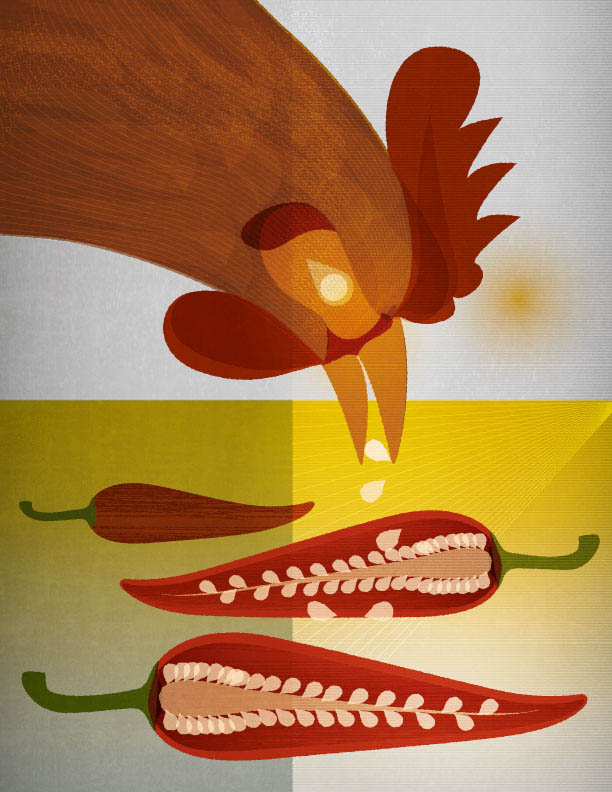Chicken-inspired pain solution
Drug developed to mimic genetic variant that prevents the burning sensation of eating spicy foods

Chicken farmers know that feed laced with capsaicin — the chemical that gives chiles their spiciness — is a turnoff for marauding squirrels and mice, while their chickens eat it up.
This is because in squirrels, mice and other mammals, including humans, capsaicin activates a pain receptor, known as TRPV1, to cause a burning sensation. In most bird species, it has little effect.
“It turns out that birds are naturally resistant to capsaicin,” said Eric Gross, MD, PhD, associate professor of anesthesiology, perioperative and pain medicine.
This difference led Gross and his collaborators to pursue a drug that makes mammalian pain receptors more like those in birds — and more resistant to some forms of pain.
In a study published in February 2023 in the Journal of Clinical Investigation, the team identified a rare genetic variant in humans that modifies the receptor and reduces pain sensitivity. Mice with this mutation were less bothered by capsaicin and would even eat spicy bird food.
Gross, senior author of the study, estimates that the mutation reduced pain by about 50%.
“You don’t want to take away the full sensation of pain,” he said. “You still want to have somebody, if they place their hand over a hot stove or step on a Lego, to have that pain sensation.”
The researchers have designed a molecule that replicates the variant’s effects and hope to modify it so it can relieve pain longer.
“We’re really excited to see if this is a potential therapeutic for pain after surgery and to help us move toward an opioid-free approach,” Gross said.
Read more here.

